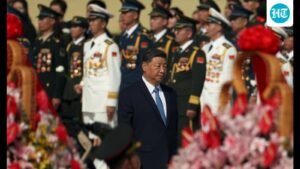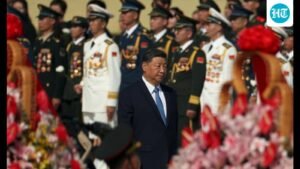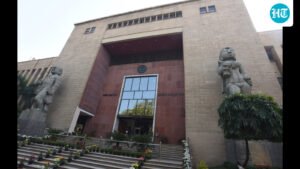
The demand for accurate information on the performance of the Indian economy can be traced to the growth in the number of research analysts, investment advisors, mutual funds, and foreign portfolio investors registered with the Securities and Exchange Board of India. Furthermore, statistics from the flow of funds published by the Reserve Bank of India (RBI) indicate that financial assets of households in the form of equity and investment fund shares increased from over 7 lakh crore in 2011-12 to over 30 lakh crore in 2022-23. Investments by households in insurance and retirement products increased from 26 lakh crore to 107 lakh crore. Unlike two decades ago, even Indian households are demanding data for tracking the economy and also forming expectations about the future.

RBI’s monetary policy committee (MPC), which meets six times a year, requires accurate measurements of the changes in the economic activity as measured by gross domestic product (GDP) and also for measuring inflation precisely. These data are important from the perspective of setting interest rates. With more emphasis on evidence-based policy formulation, and targeted and focused interventions, government agencies also require granular (sub-state level) and more precise data. The government of India also has to report to international agencies the progress made towards achieving the Sustainable Development Goals.
In its more than seven-decade-long journey, NSS went behind the curve in terms of catering to the explosion in demand for data for a brief period. While credit is given for NSS data being the cornerstone of national planning and policymaking, the system could not rest on its past laurels. During the past few years, NSS has sought to make itself responsive to emerging data needs. As NSS celebrates its 75th year, the green shoots of this transformation are becoming visible.
The priority was to reduce the time lag between the completion of surveys and the release of data. The shift to paperless surveys, i.e., the collection of data using tablets, has reduced the lag. An example of this is the Comprehensive Modular Survey (telecom) conducted between January and March 2025, and the results were released in May 2025. From this year, monthly estimates of key labor market indicators are published within a fortnight based on the Periodic Labor Force Survey (PLFS).
The second priority was to have extensive consultations with all stakeholders after the release of the data. The consultations have not only been with regard to NSS data but also on the ongoing base revision of GDP and consumer price index. Since June 2024, a number of data users’ conferences on different surveys have been held around the country. These conferences have turned out to be an effective platform to foster constructive dialogue between data producers and data users, facilitating knowledge exchange on methodologies and insights from the survey findings through participation of a large number of participants from various reputed institutes.
The third priority was to seek feedback from all stakeholders regarding the instruments of the new surveys. NSS has also sought comments from the public on questionnaires used for the surveys. For example, the ministry has received extensive comments on the Household Income Survey and Situation Assessment Survey of Agricultural Households. These have helped in refining the methodology and modifying the instruments of these surveys in view of the users’ needs.
The fourth priority pertained to the generation of estimates at the district level. This required a large increase in the sample size, and this is reflected in PLFS 2025. The engagement with the state governments has also increased. For the state of Uttar Pradesh, a detailed exercise was undertaken to generate statistical model-based estimates of district-level average Monthly Per Capita Consumption Expenditure (MPCE) for the year 2023-24. The suggested method can be utilized by other states for the estimation of sub-state level MPCE values.
The fifth priority was to fill important data gaps. To begin with, two new surveys have been launched — Forward-Looking Survey on Private Sector CAPEX Investment Intentions and Annual Survey of Incorporated Services Sector Enterprises. The recently launched National Household Travel Survey will make available information on the travel habits of Indians. The first-ever all-India survey on household income has been scheduled for 2026 to facilitate the understanding of income distribution and economic inequality.
Despite the changes that have been ushered in, there are a number of challenges that need to be overcome. For instance, surveyors do not necessarily get access to multi-storey residential complexes and gated communities. Even in the localities where our surveyors are able to interview households, we find that informants are not inclined to give time to answering the questions. While the length of the survey questionnaires has increased, the attention span of households to answering questions has exponentially declined. Responder fatigue is a reality.
Another challenge is to capture the emerging reality. A case in point is how one would measure the gig and platform economy, be it in terms of output or the number of individuals engaged in this segment. Another example is the measurement of the knowledge economy. While some data standards have been developed, incorporating the same into NSS surveys requires customization for the Indian context. And this is not a straightforward exercise.
As NSS completes its 75th year, it is important that the changes gain momentum. NSS data need to track India’s socio-economic transformation and set the markers for measuring progress towards Viksit Bharat 2047.
Geeta Singh Rathore is director general, NSS, MOSPI and Amitava Saha is deputy director general, Household Survey Division, NSS, MOSPI. The views expressed are personal




